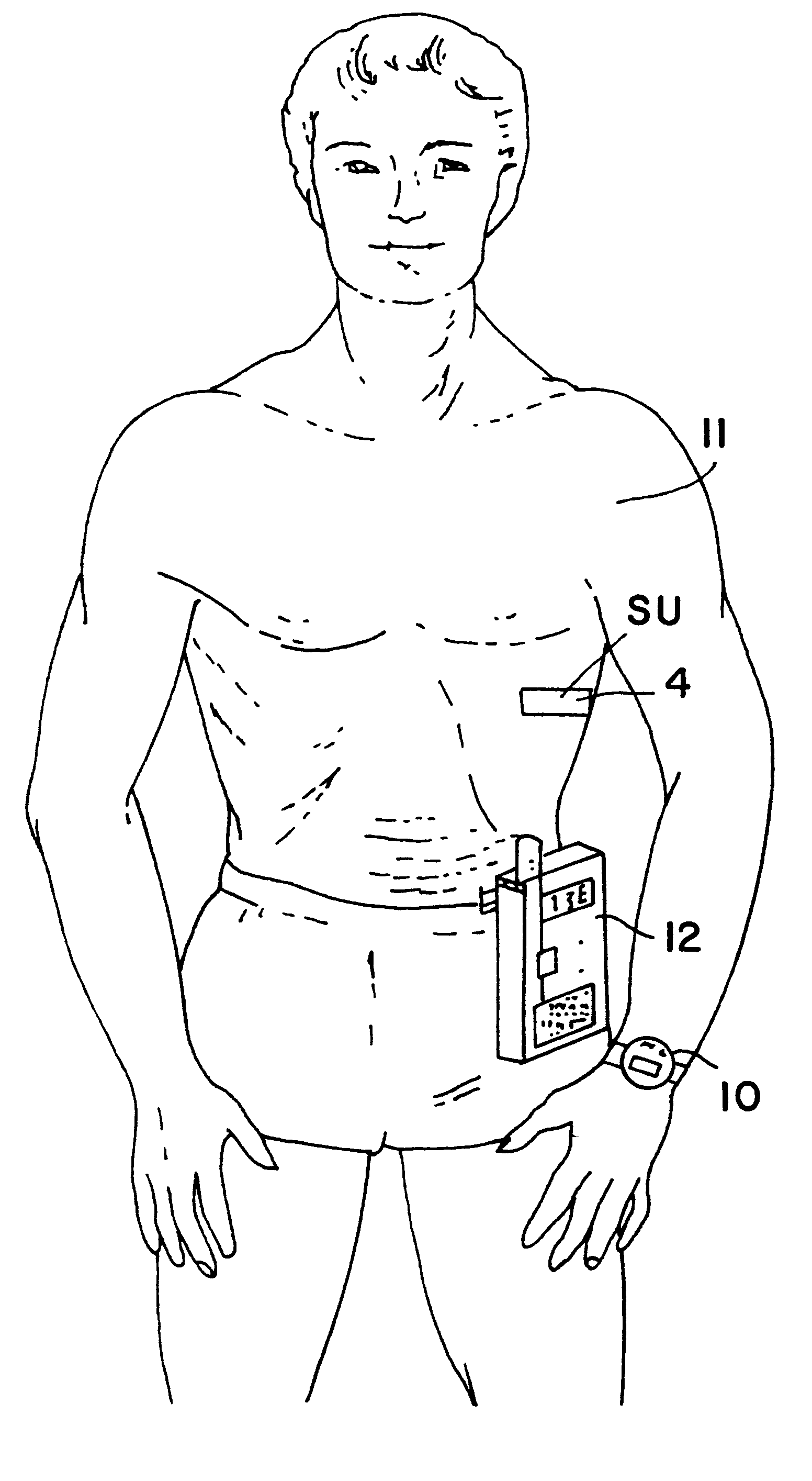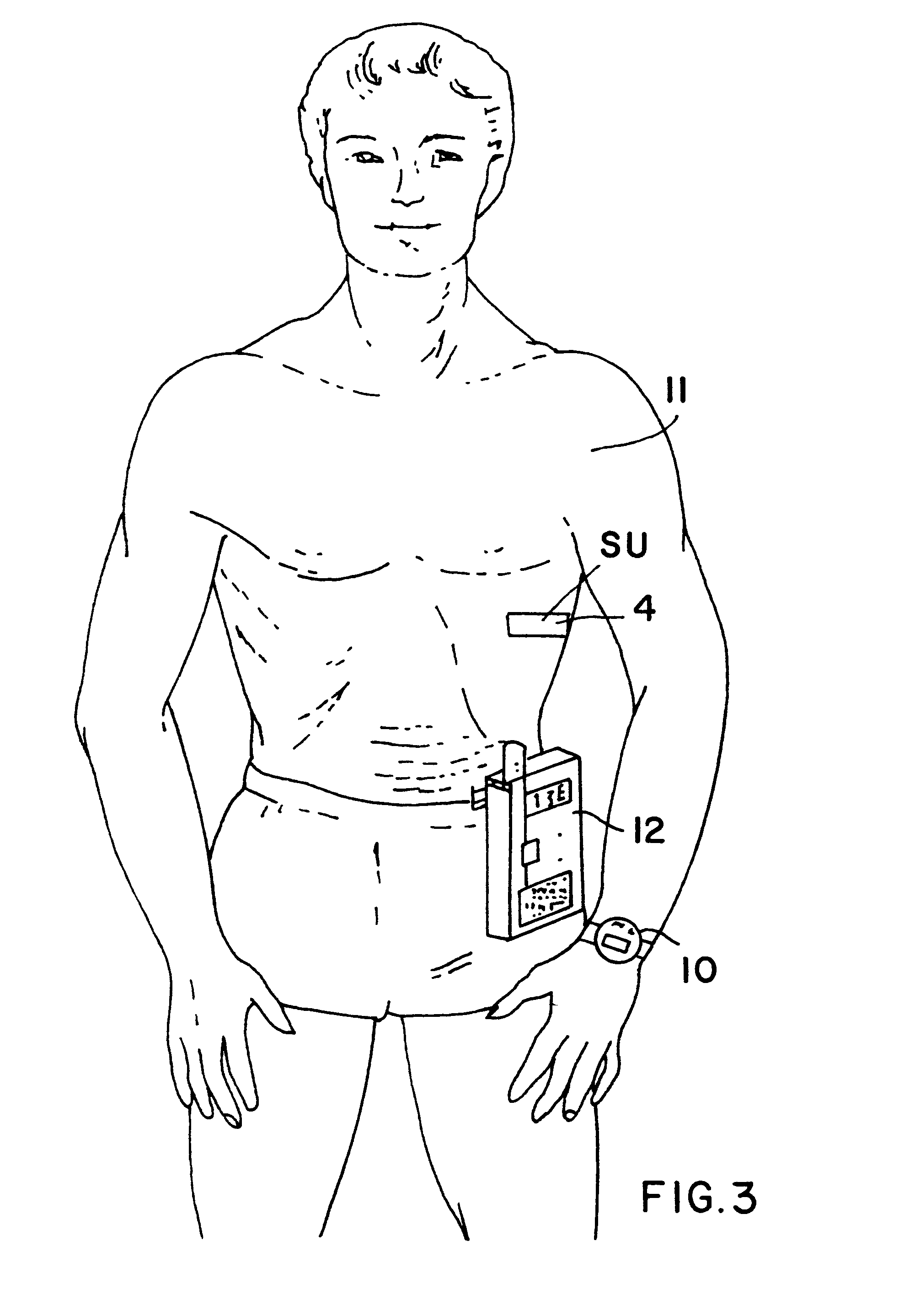System for long-term remote medical monitoring
a technology for medical monitoring and long-term monitoring, which is applied in the field of long-term remote medical monitoring systems, can solve the problems of not being suitable for known devices and systems, unable to meet the needs of patients, and only being used with serious limitations
- Summary
- Abstract
- Description
- Claims
- Application Information
AI Technical Summary
Benefits of technology
Problems solved by technology
Method used
Image
Examples
Embodiment Construction
FIG. 1 schematically shows an autonomous sensor unit SU, which is a component of the present inventive system. The sensor unit SU comprises at least one miniaturized sensor 1, as well as at least one pair of transmitting and receiving electrodes 2, which are both connected to a microchip 3 by respective signal conductors 1A and 2A. This circuit arrangement is mounted on a sensor carrier or substrate 4, which is preferably in the form of a bandage 4, including an appropriate adhesive, so that the entire sensor unit SU can be adhered onto the skin of an astronaut or other subject in the manner of a typical adhesive medical bandage.
The microchip 3 of the sensor unit SU is a highly integrated electronic circuit component, as particularly shown in the detail view of FIG. 2. As shown in FIG. 2, the microchip 3 includes a measured data acquisition unit 5 connected via the dataline 1A to the sensor 1, a signal preprocessing unit 6 connected downstream from the measured data acquisition unit...
PUM
 Login to View More
Login to View More Abstract
Description
Claims
Application Information
 Login to View More
Login to View More - R&D
- Intellectual Property
- Life Sciences
- Materials
- Tech Scout
- Unparalleled Data Quality
- Higher Quality Content
- 60% Fewer Hallucinations
Browse by: Latest US Patents, China's latest patents, Technical Efficacy Thesaurus, Application Domain, Technology Topic, Popular Technical Reports.
© 2025 PatSnap. All rights reserved.Legal|Privacy policy|Modern Slavery Act Transparency Statement|Sitemap|About US| Contact US: help@patsnap.com



